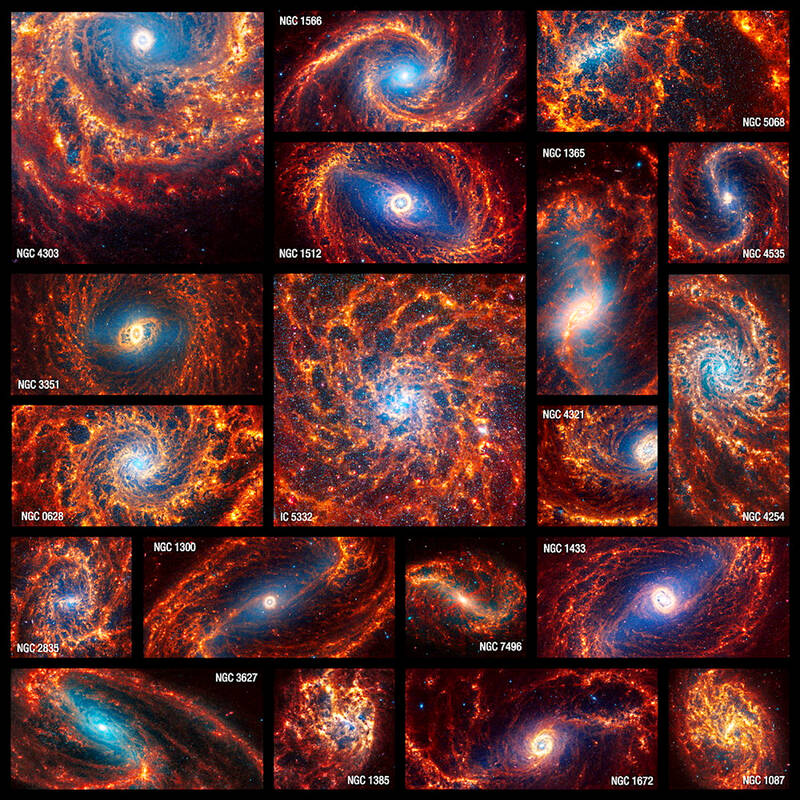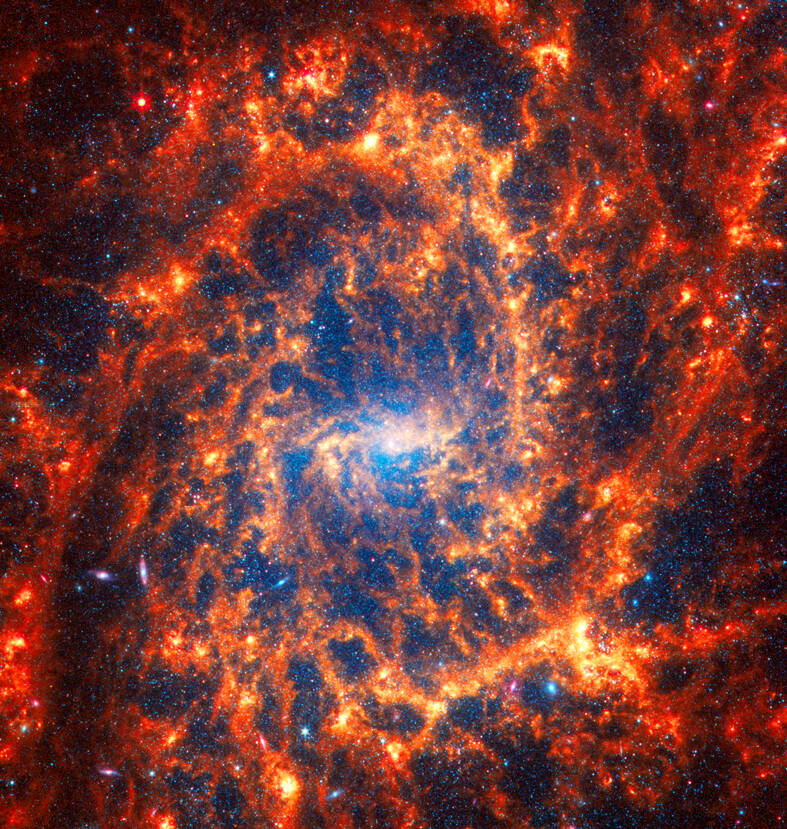If you’ve ever been blown away by an image of outer space, it’s a pretty safe bet it was taken by a spacecraft. That’s no surprise if we’re talking about the planets of our own solar system, where probes have been sending back spectacular closeups since the 1960s. But what about all those nebulae, star clusters and galaxies that are much farther away? For stunning astrophotography, nothing can beat Nasa’s Hubble space telescope, or its huge new successor, the James Webb space telescope (JWST). They’re called space telescopes not just because they observe space, but because they’re located in space.
The JWST, for example, is about 1.5 million kilometers — approximately four times as far as the moon and far enough that radio signals sent from Earth, traveling at the speed of light, take about five seconds to reach it. In other words, the JWST is about five light seconds away from Earth. But many of the galaxies it has photographed are hundreds of millions, or even billions, of light years away. Clearly, the reason for locating the JWST, and Hubble before it, in space has nothing to do with getting closeup pictures. They’re no nearer to the objects they’re viewing than telescopes here on Earth. So why do astronomers go to all the trouble and expense of putting telescopes in space?
ABOVE THE ATMOSPHERE

Photo: Reuters
One reason is to get a clearer view. Obviously, a space telescope won’t be bothered by cloud or haze, but there’s another atmospheric effect that’s so familiar down here on Earth that we take it for granted. It’s the way stars twinkle, rather than appearing as steady points of light. This happens because the rays of starlight are constantly being jiggled about by atmospheric turbulence and it means that no matter how good a telescope is in theory, it can never form a perfectly sharp image if it’s located on the Earth’s surface. The idea of launching a telescope into space to get round this problem was first suggested by the American physicist Lyman Spitzer in 1946.
That, of course, was long before space travel became a practical reality. It wasn’t until 1990, after much lobbying by astronomers, that Nasa finally launched Hubble into orbit. In terms of design, it’s comparable to a medium-sized ground-based telescope, but its unique vantage point in orbit made it far more powerful than any instrument on the Earth’s surface.
The most obvious consequence was the stream of gorgeous full-color images we’re all familiar with, but — perhaps surprisingly — these have very little to do with Hubble’s primary mission. They’re basically “outreach” aimed at bringing the wonders of astronomy home to the general public and hopefully inspiring new generations of students to pursue careers in the physical sciences. As important as this is, it’s just a sideline to Hubble’s main purpose, which is cutting-edge science. Over the course of three decades, its findings have been reported in more than 20,000 peer-reviewed scientific papers, many of them without any photographic images. For astronomers, high-precision measurements — for example, of light intensity or chemical spectra — are the most important thing and that’s what Hubble’s data-collecting hardware is really designed for.

Photo: Reuters
ULTRA-LONG EXPOSURES
The atmosphere has another detrimental effect besides blurring astronomical images. The phenomenon of “skyglow,” or the scattering of light within the atmosphere, means it never gets totally dark, limiting the ability of earthbound telescopes to see extremely faint objects. In space, however, the background sky is completely black, making it possible to discern even the faintest objects given a long enough exposure.
In the case of Hubble, its longest exposure photographs — taken by repeatedly pointing at the same patch of sky and adding up the result over many days — are called “deep field” images because they probe far deeper into the universe than any ground-based telescope could. And because light travels at a finite speed, the deep field images are also probing farther back into the past. Simply put, the farther away an object is, the longer ago its light started out on its journey to us.
This makes Hubble something of a cosmic time machine, with the deepest of its deep field images drilling down through 97 percent of the universe’s 13.8 billion-year lifetime to show us how it looked just 400 million years after the big bang. And that’s just the beginning; astronomers hope that the JWST will see even farther, all the way back to the formation of the very first stars and galaxies.
SEARCHING FOR EXOPLANETS
Among the many science goals pursued by today’s astronomers, some can hold just as much fascination for the public at large. Probing the birth of the universe, as Hubble’s deep field images do, is one example — and the search for extraterrestrial life is another. If we’re talking about life at a comparable stage of complexity to ourselves, then we’re highly unlikely to find it here in our own solar system; we really have to look at exoplanets orbiting stars other than our own sun. It turns out this is another area where space telescopes have huge advantages over ground-based models.
By the end of its working life in 2018, Nasa’s Kepler had discovered at least 2,700 new exoplanets.
There are several ways to discover new exoplanets, but there’s one in particular that can be done on an industrial scale — as long as you use a specially designed space telescope.
Called the “transit method,” it exploits the fact that, when a planet orbiting a distant star passes across the face of that star from our perspective, then a small proportion of the star’s light will be blocked out. In order to detect the planet, astronomers just have to watch for that characteristic dip in brightness. So far, so good; monitoring the brightness of a star over time — its “light curve” — is a well-established part of astronomy. Traditionally, however, it’s been used to look for relatively large and frequent fluctuations, not the tiny ones that a transiting exoplanet might produce once every few years.
To have any hope of success, we need to monitor thousands of light curves simultaneously — and continuously over a period of several years — looking for dips in brightness of just a few parts per million. This is a tremendous engineering challenge that ultimately can only be achieved with specially designed space telescopes. The first of them, Nasa’s Kepler, was launched in 2009, and by the end of its working life in 2018 it had discovered at least 2,700 new exoplanets — more than two-thirds of all those known at the time. Nasa’s follow-up mission, the Transiting Exoplanet Survey Satellite, is shaping up to be equally prolific.
THE FUTURE
From the big bang to exoplanets, space telescopes have played a key role in building up our current understanding of the universe. But for every discovery that’s made, there are new questions to answer — so it’s a safe bet that astronomers will always be clamoring for bigger and better space telescopes. Recent entrants in the field include Esa’s Euclid, launched last year and just embarking on the ambitious task of mapping the distribution of billions of galaxies out to a distance of 10bn light years in an attempt to unravel the mysteries of dark energy (the energy in empty space that causes the expanding universe to accelerate) and dark matter (which comprises about 85 percent of the universe’s mass).